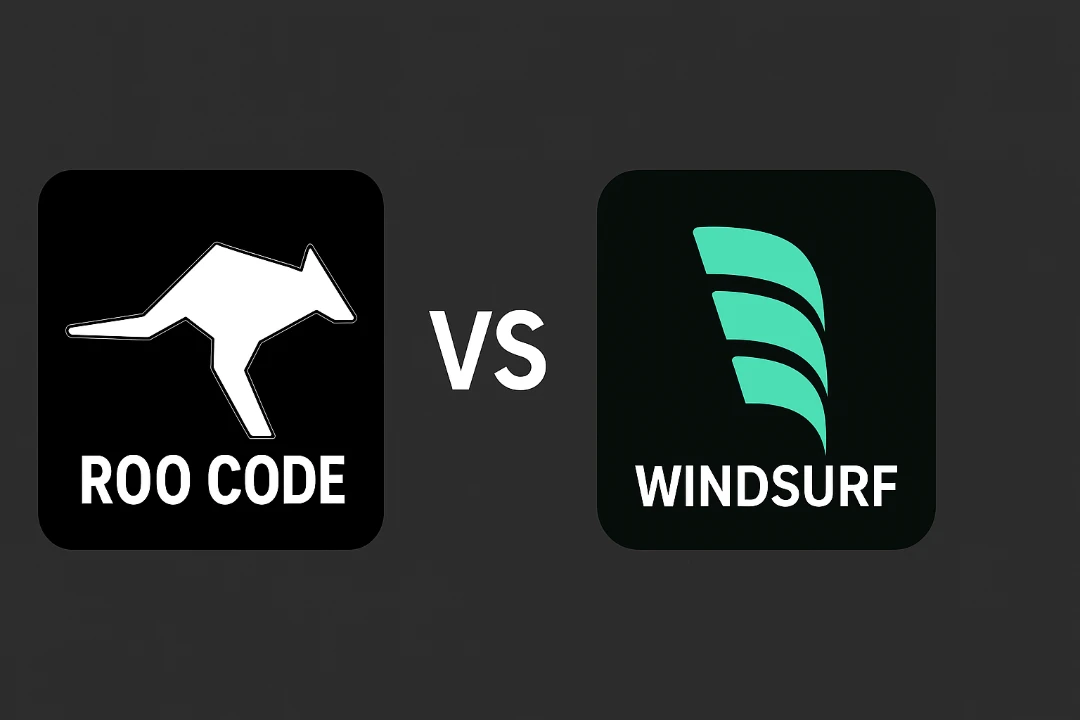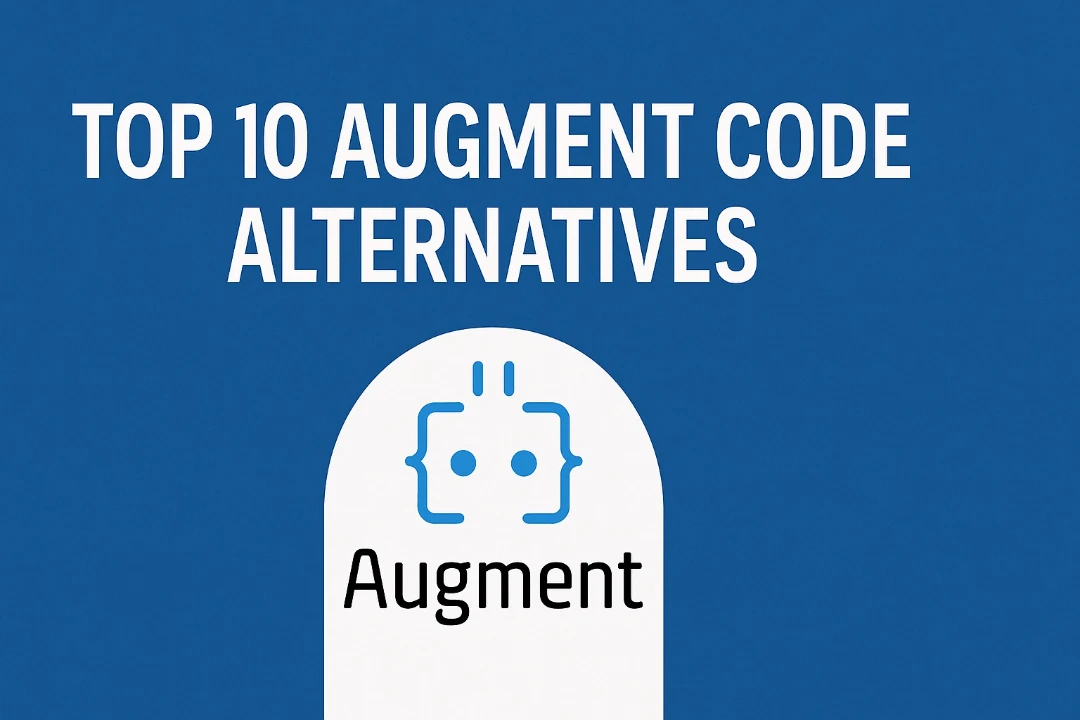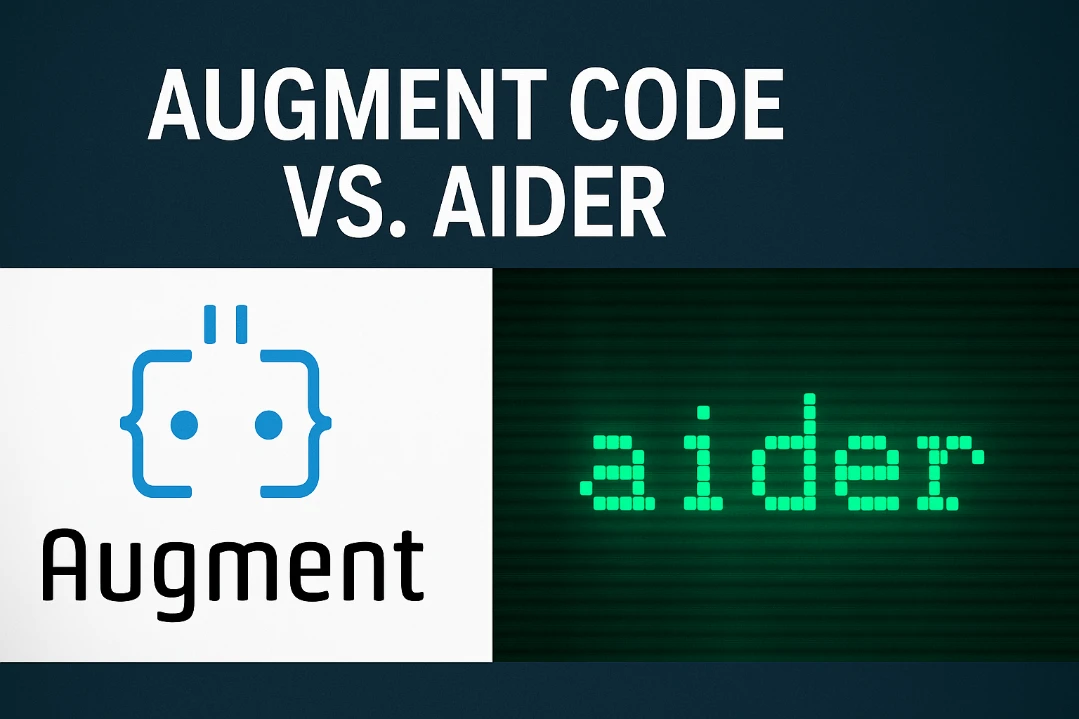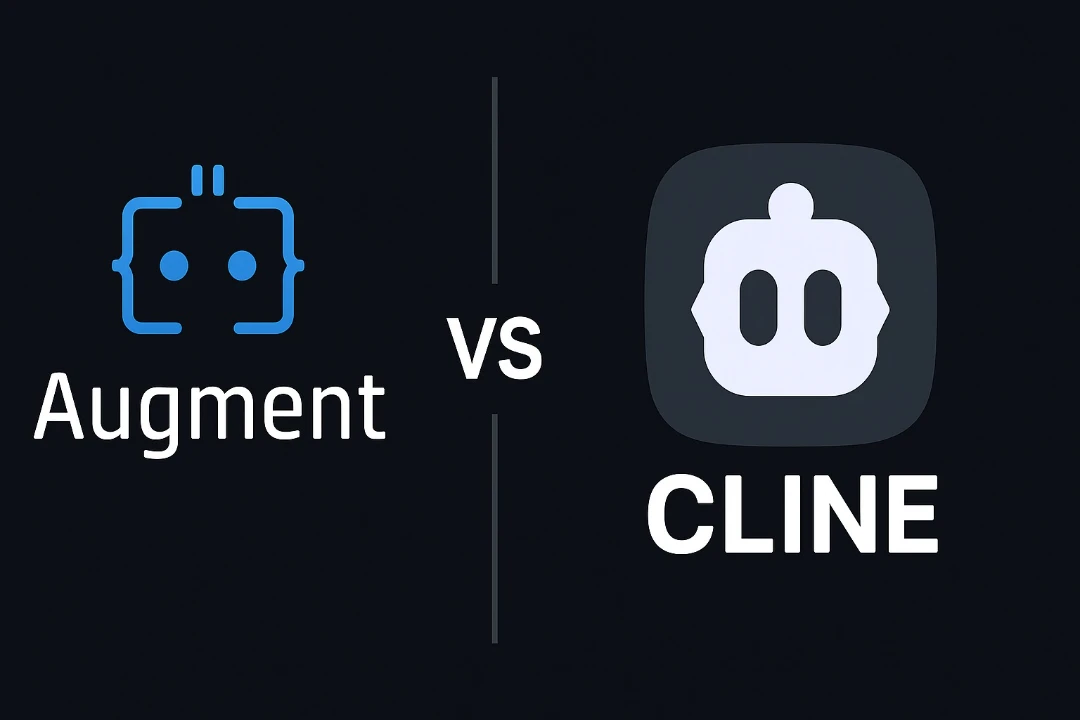
Roo Code vs Windsurf: Comparing the Top AI Coding Assistants in 2025
Roo Code vs Windsurf: Comparing the Top AI Coding Assistants in 2025
In the rapidly evolving landscape of AI-assisted software development, choosing the right coding companion can significantly impact your productivity and workflow. Two powerful contenders in this space—Roo Code and Windsurf—offer sophisticated AI capabilities that promise to transform the way developers write, debug, and maintain code. While both tools harness advanced language models to assist with coding tasks, their approaches, features, and ideal use cases differ in important ways.
This comprehensive guide examines the key differences between these powerful tools, helping you determine which might better align with your development needs, workflow preferences, and technical requirements.
The Origin and Evolution of Roo Code and Windsurf
Roo Code: The Customizable VS Code Extension
Roo Code began as a fork of the popular Cline extension for VS Code, rebranded from its original name "Roo Cline." Building on a solid foundation of autonomous coding capabilities, Roo Code has expanded into a highly customizable AI coding assistant that integrates seamlessly with your existing VS Code environment.
Open-source autonomous AI coding agent with extensive customization and multi-model support
As a VS Code extension rather than a standalone IDE, Roo Code provides powerful AI assistance without requiring developers to migrate away from their familiar editor. Key capabilities include:
- Creating and editing files with rich contextual awareness
- Executing terminal commands with user permission
- Multiple specialized interaction modes (Code, Architect, Ask)
- Browser automation for testing and debugging
- Comprehensive codebase understanding and navigation
Recently, Roo Code implemented significant performance improvements, particularly in diff editing speed, which is now up to 10 times faster than previous versions. The extension continues to evolve with new features like customizable network timeouts and Quick Actions for faster code optimization.
Windsurf: The Purpose-Built AI IDE
Windsurf takes a fundamentally different approach as a standalone IDE specifically designed to create a seamless integration between developers and AI. Developed by the team behind Codeium and built on a forked version of VS Code, Windsurf has been reimagined from the ground up to prioritize what they call "flow state" - a coding experience where AI assistance feels natural and intuitive.
AI-powered code editor with advanced context awareness and automated bug fixing capabilities
As a dedicated AI-powered editor, Windsurf offers:
- Cascade, an agent that codes, fixes, and thinks "10 steps ahead"
- Ultra-smart context awareness for working with complex codebases
- "Supercomplete" that predicts not just the next line but your next intent
- Multi-file editing with deep contextual understanding
- Built-in live preview and deployment capabilities
- Deep codebase indexing and understanding
Windsurf represents a bold step toward a future where the IDE itself becomes an active participant in the development process, anticipating needs and handling complex tasks with minimal direction.
Core Feature Comparison
When evaluating AI coding assistants, understanding their core capabilities is essential. Let's explore how Roo Code and Windsurf compare across key functionality areas:
Code Generation and Editing
Roo Code:
- Contextual code generation based on your codebase
- Efficient diff-based editing that modifies only necessary parts
- File creation and editing through natural language instructions
- Automatic detection and fixing of incomplete code segments
- Multiple specialized modes tailored to different coding tasks
Windsurf:
- Proactive code generation with Cascade agent
- "Supercomplete" functionality that predicts intent beyond just code
- Multi-file editing with comprehensive contextual understanding
- Real-time linter integration to automatically fix errors
- Tab-to-jump navigation for seamless code movement
Key Difference: While Roo Code offers a more traditional approach to AI-assisted coding through prompts and responses, Windsurf aims to create a more autonomous "agent" experience where the IDE actively anticipates your needs. Roo Code gives developers more explicit control over AI actions, while Windsurf focuses on creating a fluid, predictive experience.
Terminal Command Execution
Roo Code:
- Execute commands in your existing VS Code terminal
- Real-time output processing and response
- Permission-based execution model for security
- Background task support for long-running processes
- Automated command execution for repetitive tasks
Windsurf:
- Terminal command suggestions based on context
- Natural language terminal commands (Cmd+I in terminal)
- "Turbo" mode for automatic command execution
- Continuous tracking of commands and environments
- Integrated command history awareness
Key Difference: Both tools offer robust terminal integration, but Windsurf's approach focuses more on predictive command generation and seamless integration with its agent system. Roo Code provides a more traditional but highly capable terminal execution system with strong permission controls.
Model Support and Flexibility
Roo Code:
- Support for a wide range of models via multiple providers
- OpenRouter, Anthropic, OpenAI, Google AI Studio integration
- Enhanced support for models like GPT-4o and Claude 3.7 Sonnet
- Compatible with local models through LM Studio/Ollama
- Custom model configuration and fine-tuning options
Windsurf:
- Built around premium models like GPT-4o and Claude 3.5 Sonnet
- Credits-based access to high-quality models
- Optimized prompt engineering for efficient token usage
- Integrated model switching for different tasks
- Possible support for other models through API integration
Key Difference: Roo Code offers more flexibility in model selection and provider options, following a "bring your own API" approach that allows developers to choose their preferred AI backends. Windsurf provides a more curated experience with premium models accessible through their credit system.
User Interface and Interaction Design
Roo Code:
- Operates within familiar VS Code interface
- Chat panel for interaction with the AI assistant
- Mode-switching UI for quick context changes
- Extensive settings and configuration options
- Visual feedback for code changes and suggestions
Windsurf:
- Purpose-built UI optimized for AI-assisted development
- Flows-based interaction combining agent and copilot approaches
- Integrated preview panel for immediate visual feedback
- Modern, streamlined interface designed to minimize distractions
- One-click deployment features for web applications
Key Difference: This represents perhaps the most fundamental difference between the two tools. Roo Code offers AI assistance within the familiar confines of VS Code, while Windsurf provides a complete reimagining of the IDE experience built around AI from the ground up. Your preference will largely depend on whether you value familiarity and integration with existing workflows or are seeking a fresh approach designed specifically for AI-assisted development.
User Experience Analysis
The user experience significantly impacts productivity and satisfaction with AI coding tools. Here's how Roo Code and Windsurf compare:
Interface Design and Usability
Roo Code:
- Familiar VS Code environment reduces learning curve
- Progressive discovery of advanced features
- Mode-switching controls for different contexts
- Extensive customization options for tailoring the experience
- Some complexity from feature-rich interface
Roo Code's interface philosophy builds on the familiar VS Code experience, adding AI capabilities without fundamentally changing how you interact with your editor. This approach minimizes disruption but can introduce some visual complexity as features are added.
Windsurf:
- Modern, streamlined interface specifically designed for AI workflows
- Flow-based interactions that feel natural and intuitive
- Visual preview capabilities integrated into the editor
- "Tab to Jump" and other navigation enhancements
- Emphasis on maintaining developer focus and flow state
Windsurf reimagines the development environment with AI at its core, creating an experience that feels distinctly different from traditional IDEs. While this may require some adaptation, many developers report that the interface quickly becomes intuitive and enhances productivity.
Learning Curve
Roo Code:
- Moderate learning curve for basic functionality
- Steeper curve for advanced features and customization
- Builds on existing VS Code knowledge
- Progressive discovery of capabilities
- Documentation and community support for learning
Windsurf:
- Initial learning curve for those transitioning from traditional IDEs
- New mental model for AI-assisted development
- Intuitive once basic concepts are understood
- Requires adapting to a more agent-centric workflow
- Comprehensive documentation but newer community
The learning curve for each tool varies depending on your background. VS Code users will find Roo Code more immediately accessible, while developers open to a fresh approach may quickly adapt to Windsurf's agent-oriented philosophy.
A senior developer who has used both tools commented: "Roo Code felt immediately familiar since I use VS Code daily, but Windsurf's unique approach took a day or two to click. Once it did, though, the flow felt incredibly natural."
Cost and Pricing Comparison
Understanding the cost structure of AI coding assistants is crucial for making an informed decision, especially for long-term use.
Pricing Models
Roo Code:
- Free extension with BYOM (Bring Your Own Model) approach
- Costs based on API usage of chosen models
- Compatible with OpenRouter for centralized API billing
- No subscription fee for the extension itself
- Flexible model choice allows cost optimization
Windsurf:
- Free tier with limited features and credits
- Pro plan ($15/month) with 500 user prompt credits and 1,500 flow action credits
- Pro Ultimate plan ($60/month) with unlimited user prompt credits and 3,000 flow action credits
- Subscription-based model with packaged credits
- Premium models included in subscription tiers
Key Difference: Roo Code operates on a "pay for what you use" model through external API services, giving users complete control over their AI expenditure. Windsurf follows a more traditional SaaS subscription model with tiered pricing based on usage limits. This fundamental difference means that Roo Code might be more economical for occasional use, while Windsurf offers more predictable pricing for regular users.
Cost Management Strategies
Roo Code:
- Use of OpenRouter for discounted API rates
- Model switching for cost-appropriate tasks
- Context window customization to reduce token usage
- Settings optimization for efficiency
- Local model support for zero-API-cost operation
Windsurf:
- Free tier for evaluation and light usage
- Credit allocation planning for different tasks
- Efficiency-focused features to maximize credit value
- Auto-completion features with minimal credit consumption
- Pro plan offerings of varied credit quantities
Cost Consideration: For cost-conscious developers, the optimal choice depends largely on usage patterns. Roo Code provides more granular control over costs but requires managing external API accounts. Windsurf offers predictable subscription pricing but with less flexibility in provider selection.
Real-World Applications and Use Cases
Each tool excels in different scenarios based on their design philosophy and capabilities.
Ideal Use Cases for Roo Code
1. Integrated Development in Established Workflows For developers already comfortable with VS Code, Roo Code provides powerful AI assistance without requiring a switch to a new environment. This seamless integration makes it ideal for teams with established VS Code-based workflows who want to enhance productivity without disruption.
2. Customized AI Experiences Roo Code's extensive customization options and multiple specialized modes make it perfect for developers who want to shape the AI's behavior to match specific tasks or roles. The ability to create custom modes for security auditing, documentation, or specific development styles provides unprecedented flexibility.
3. Cross-Platform and Multi-Provider Teams Teams working across different environments or preferring different AI providers will appreciate Roo Code's provider-agnostic approach. It allows developers to use their preferred models while maintaining a consistent tooling experience.
4. Browser Automation Requirements Projects requiring integrated browser testing and automation benefit from Roo Code's browser control capabilities, which allow for end-to-end testing and UI verification directly from the development environment.
Ideal Use Cases for Windsurf
1. Full-Stack Web Development Windsurf's integrated preview and deployment features make it exceptionally well-suited for web developers who want to see changes in real-time and push applications live without switching contexts. The seamless "see it, shape it, ship it" workflow accelerates web development significantly.
2. Flow-State-Focused Development Developers who value maintaining deep focus and minimizing context switching will appreciate Windsurf's design philosophy. Its predictive features and streamlined interface help maintain the coveted "flow state" where productivity peaks.
3. Agent-Assisted Development Projects where developers want more proactive AI assistance benefit from Windsurf's agent-centric approach. Instead of requiring explicit prompts for every task, Cascade can anticipate needs and suggest actions based on context, saving time and mental overhead.
4. Modern Development Teams Teams embracing cutting-edge development practices and willing to adapt their workflows to new paradigms often find Windsurf's fresh approach aligns well with their forward-thinking philosophy.
User Testimonials and Community Feedback
Real users provide valuable insights into how these tools perform in practice. Here's what developers are saying:
Roo Code User Feedback
"Roo Code's multi-mode capability has transformed how I approach development. I switch to Architect mode when planning system structure, then Code mode for implementation, and it feels like having a specialized expert for each phase." - Senior Backend Developer
"The customization options in Roo Code are unmatched. I've created specialized modes for security auditing, documentation, and even onboarding new team members. Each one has tailored prompts and tool permissions." - DevOps Engineer
"Being able to use my preferred models through my own API keys gives me complete control over costs and quality. Some days I use GPT-4o for complex tasks, other days I switch to cheaper or local models for routine work." - Freelance Developer
"The browser automation feature saved our QA process. We can now test UI flows directly from the development environment without switching to separate testing tools." - Frontend Lead
Windsurf User Feedback
"Cascade feels like it's reading my mind sometimes. I start typing, and it's already suggesting exactly what I was about to write. The time savings are incredible." - Full-Stack Developer
"The preview panel changed everything for me. Seeing changes instantly as I code, then deploying with one click—it's frictionless in a way that makes traditional workflows feel clunky by comparison." - Web Developer
"Windsurf's Tab feature is subtle but revolutionary. It seems to know where I want to go next in the code, saving countless keystrokes and keeping me in the flow." - Senior Software Engineer
"The learning curve was worth it. After a week with Windsurf, going back to traditional IDEs feels like stepping back in time. It's like the difference between driving a modern car and one from 20 years ago." - Technical Lead
Performance and Efficiency
How these tools perform in real-world coding scenarios can significantly impact your productivity.
Speed and Responsiveness
Roo Code:
- Recent 10x performance improvement in diff editing
- Quick response times within VS Code environment
- Performance tied to chosen AI model
- Customizable network timeouts for different environments
- Efficient token usage with context management
Windsurf:
- Built for speed with optimized internal architecture
- Smooth, responsive interface even during complex operations
- Efficient background indexing for large codebases
- Fast autocomplete and supercomplete responses
- Optimized credit usage for maximum performance
Performance Comparison: Both tools have made significant strides in performance optimization. Roo Code's recent speed improvements have addressed previous concerns about diff editing performance, while Windsurf's ground-up design prioritizes responsiveness. The experience of working with either tool should feel smooth and efficient, though Windsurf's purpose-built nature may give it a slight edge in raw performance.
Code Quality and Accuracy
Roo Code:
- Multiple modes optimize for different quality priorities
- Diff-based editing provides clear quality control
- Manual approval workflow ensures oversight
- Contextual awareness improves suggestion relevance
- Mode-specific optimization for different tasks
Windsurf:
- Automatic linter integration for quality control
- Deep codebase understanding for contextually appropriate suggestions
- Real-time feedback loop through preview pane
- Built-in quality checks before deployment
- Multi-file awareness prevents inconsistencies
Quality Comparison: Code quality largely depends on the underlying models, which both tools can access. However, Windsurf's integrated linter and preview capabilities provide more immediate quality feedback. Roo Code's manual approval workflow offers more explicit quality control for teams that prioritize careful review of AI-generated code.
Integration with Development Ecosystem
How well these tools fit into your broader development environment is crucial for seamless adoption.
IDE and Editor Support
Roo Code:
- Native VS Code integration
- Potential support for VS Codium and similar editors
- Deep integration with editor features
- Extension ecosystem compatibility
- VS Code settings synchronization
Windsurf:
- Standalone IDE based on VS Code fork
- Custom features beyond standard VS Code
- Integrated environment designed for AI workflow
- Optimization for specific development scenarios
- Custom UI elements for AI interaction
Integration Difference: Roo Code leverages the existing VS Code ecosystem, making it compatible with thousands of other extensions and familiar workflows. Windsurf creates a custom environment that, while based on VS Code, has been optimized specifically for AI-assisted development with unique features not available in standard VS Code.
Workflow Compatibility
Roo Code:
- Fits into existing VS Code workflows
- Augments rather than replaces current practices
- Compatible with standard software development lifecycles
- Adaptable to team-specific processes
- Incremental adoption path
Windsurf:
- Encourages new AI-centric workflows
- Optimize for "flow state" development
- Streamlined processes for web development
- Integrated preview-to-production pipeline
- Reimagined interaction patterns
Workflow Comparison: Your existing workflow will largely determine which tool fits better. Teams with established VS Code practices may find Roo Code's augmentation approach less disruptive, while those open to rethinking their development process may benefit from Windsurf's fresh perspective on AI-assisted development.
Future Development and Community Support
The long-term viability and growth of these tools depend on their development trajectory and community engagement.
Development Velocity
Roo Code:
- Regular updates with performance improvements
- Active feature development based on user feedback
- Growing community of contributors
- Clear roadmap for future enhancements
- Responsive to emerging AI capabilities
Windsurf:
- Rapid iteration with "Wave" release cycles
- Innovation-focused development approach
- Regular addition of new AI capabilities
- Pushing boundaries of IDE-AI integration
- Strong commercial backing
Development Comparison: Both tools maintain active development, but their approaches differ. Roo Code tends to focus on stability, performance, and integration with the broader VS Code ecosystem. Windsurf takes a more experimental approach, often introducing cutting-edge features that reimagine what an IDE can do in the AI era.
Community and Support
Roo Code:
- Active Discord and Reddit communities
- Extensive documentation and tutorials
- GitHub-based issue tracking and feature requests
- Community contributions welcome
- Open discussion of roadmap and features
Windsurf:
- Growing user community
- Commercial support options
- Dedicated documentation and learning resources
- Feedback-driven development
- Direct engagement with users
Community Comparison: Roo Code benefits from its connection to the broader VS Code and open-source communities, while Windsurf is building a dedicated following around its unique approach. Both offer support channels, but the nature of support differs—community-driven for Roo Code versus more structured commercial support for Windsurf.
Conclusion: Choosing the Right Tool for Your Needs
After thoroughly examining Roo Code and Windsurf, it's clear that both offer powerful AI-assisted coding capabilities but with distinct approaches and strengths. Your choice should align with your development style, preferences, and specific needs.
Choose Roo Code if:
- You're deeply integrated into the VS Code ecosystem and prefer to enhance rather than replace it
- You value extensive customization options and specialized AI modes
- You want flexibility in choosing AI providers and models
- You need browser automation capabilities for testing
- You prefer explicit control over AI actions through an approval-based workflow
- You want to maintain your existing development practices while adding AI assistance
Choose Windsurf if:
- You're open to a purpose-built IDE designed specifically for AI-assisted development
- You value a smooth, predictive coding experience that maintains "flow state"
- You appreciate integrated preview and deployment capabilities
- You want proactive, agent-like assistance that anticipates your needs
- You prefer a subscription model with bundled high-quality AI access
- You're willing to adapt to new workflows that may ultimately boost productivity
The Hybrid Approach
Many developers find value in using both tools for different scenarios. Roo Code might be preferred for projects where staying within VS Code is important, while Windsurf could be the tool of choice for web development where its preview and deployment features shine. Consider how each might fit into different aspects of your development workflow rather than viewing them as mutually exclusive options.
Ultimately, the best AI coding assistant is the one that seamlessly integrates into your workflow and enhances your productivity without introducing friction. Both Roo Code and Windsurf represent the cutting edge of AI-assisted development, and your specific needs will determine which is the perfect fit for your coding journey.
Further Resources
To explore these tools further:


